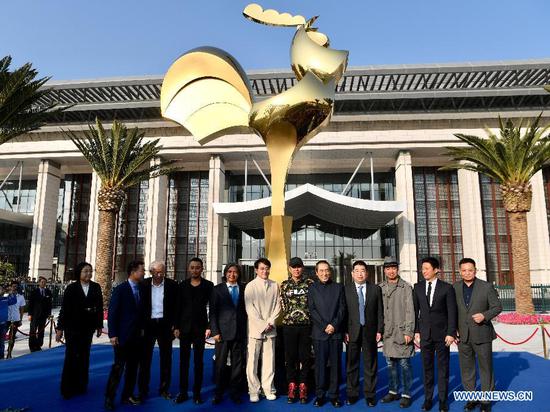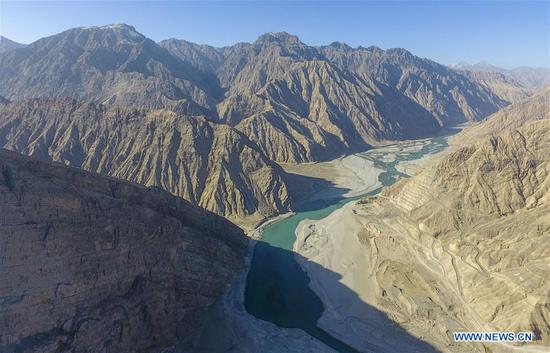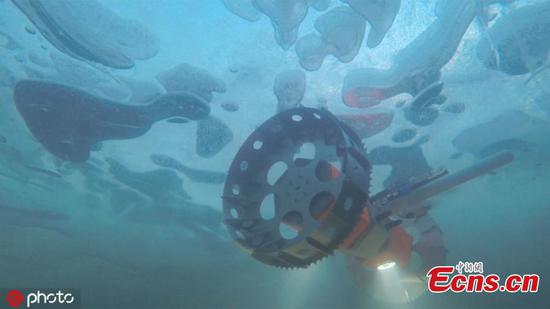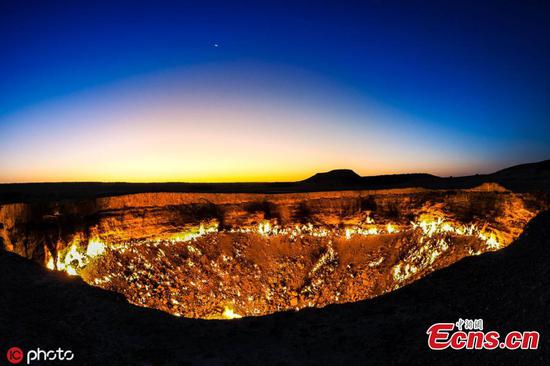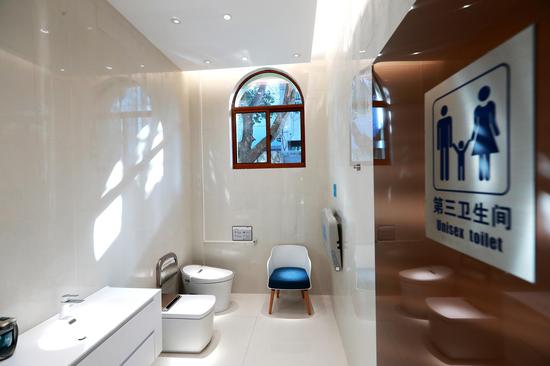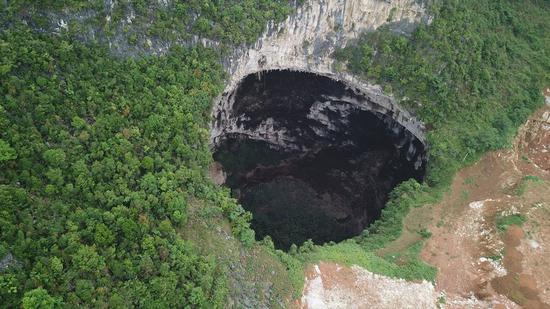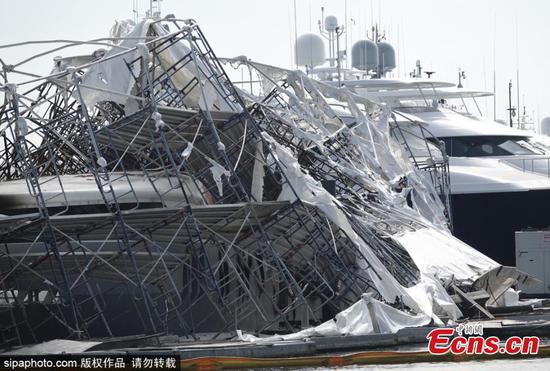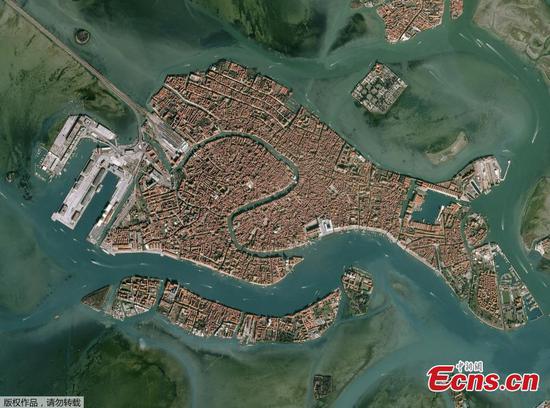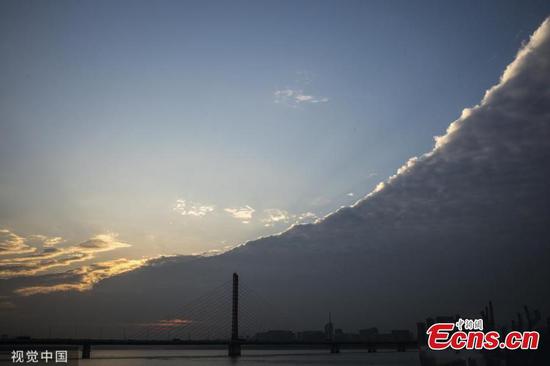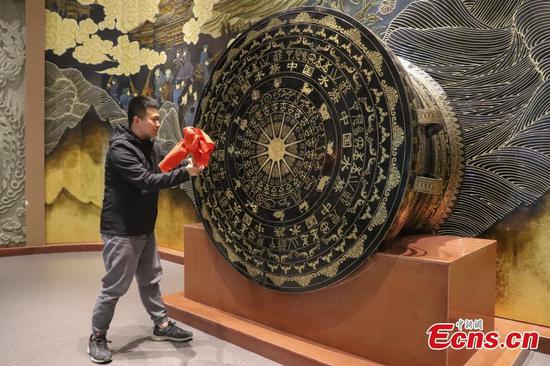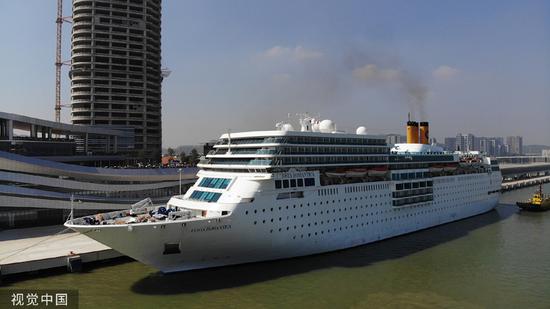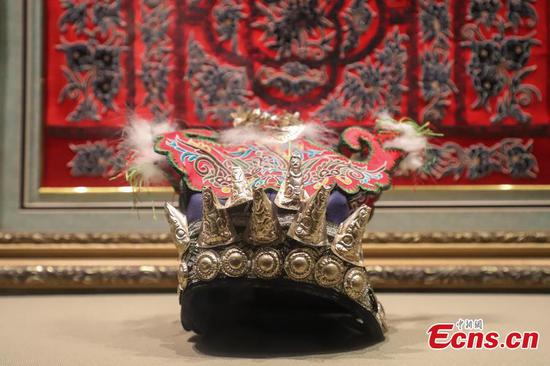Some tourist attractions in China are caught in a misconception: If they do not build a glass skywalk, they will fall behind.
"Excluding some tourist attractions that are unpopular, the number of glass skywalks, bridges or sightseeing decks in China has already surpassed 2,000," Du Hongbo, an investor of scenic areas, told the China Newsweek.
Since the "star project" of "Yuntiandu Glass Bridge" was launched in Zhangjiajie Grand Canyon, Central China's Hunan Province, many scenic areas in China followed suit with their own glass bridges.
In August 2016, the 375-meter-long and 6-meter-wide glass skywalk opened to the public. The distance between the bridge deck and the bottom of the valley reaches 300 meters.
Constructed over four years, the project has made 10 world records and was named "the world's highest and longest glass-bottomed bridge" by CNN in 2016.
In the following years, glass skywalks became a common feature in National 5A-level tourist attractions and suburban gardens.
From glass bridges to sightseeing decks, from skywalks to glass water slides, many scenic areas have been striving to provide new experience to tourists with a similar theme.
Videos of tourists crying on glass bridges, grabbing people's legs and declining to move a step were popular on social media, attracting a total of 120 million views on Douyin, China's short video platform.
When some attractions used 5D technology to make a cracked effect, tourists were shocked that the glass was breaking, thinking they would fall down the valley.
However, in October 2015, real cracks appeared in a mountainside glass walkway in Yuntaishan Scenic Park, China's Central Henan Province, though no one was injured. In April 2017, an incident at the Mulanshengtian Scenic Area in Central China's Hubei Province on a rainy day killed one and injured three on the glass slide.
A cash cow
For many scenic spots, glass walkways are a cash cow.
In Du's opinion, if a project becomes an online sensation, it can indeed drive the development of the whole scenic area, the China Newsweek reported.
According to Luo Kewen, head of the information center at Zhangjiajie Grand Canyon, a total of 7.6 million trips were made to "Yuntiandu Glass Bridge" which brought in revenue of 1.2 billion yuan ($17 million); the overall investment was 260 million yuan, about a quarter of the revenue, media reports said.
Zhangjiajie set a precedent of making extravagant profits by building a glass bridges throughout China. According to statistics, after a glass sightseeing deck was built in Beijing's suburb Pinggu district, the amount of tourists surged to 700,000 from less than 10,000 per year.
In the 1990s, Chinese tourists have been mainly attracted by landscapes, but now, they pursue the experience and a sense of participation in tourism.
According to a report released by the former China National Tourism Administration in 2012, there used to be around 20,000 scenic areas in China and 80 percent of domestic tourists chose to go to the only 20 percent of those popular scenic areas.
"The number of tourists is not abundant in many scenic areas, which requires new upgrading projects to support them. As a result, the glass walkways provide a way out for scenic areas. That's why many of them follow blindly," Yang Yanfeng, director of the online tourism research center at the Tourism College of Beijing Union University, told the China Newsweek.
Undisciplined industry
In the wake of several incidents on glass walkways, the public and the tourist industry have started to rethink how such attractions are regulated in terms of safety.
Without industry standards, acceptance standards and supervision, the glass walkways have buried many dangers.
"The quality of the building and management of glass walkways are uneven. Some projects indeed have safety concerns," Zhan Dongmei, a researcher at China Tourism Academy, told China Youth Online.
The environment should also be taken into consideration in order to protect the natural ecosystem around the glass walkway construction project, according to Zhan.
Du gave an example of the hefty price tag of the detection for glass walkway projects.
If a glass walkway costs 3 million yuan, the testing fee could reach 400,000 to 500,000 yuan, the China Newsweek said.
Experts noted even though relevant local level and industry standards have already been compiled with, there is no unified standard from the national level.










